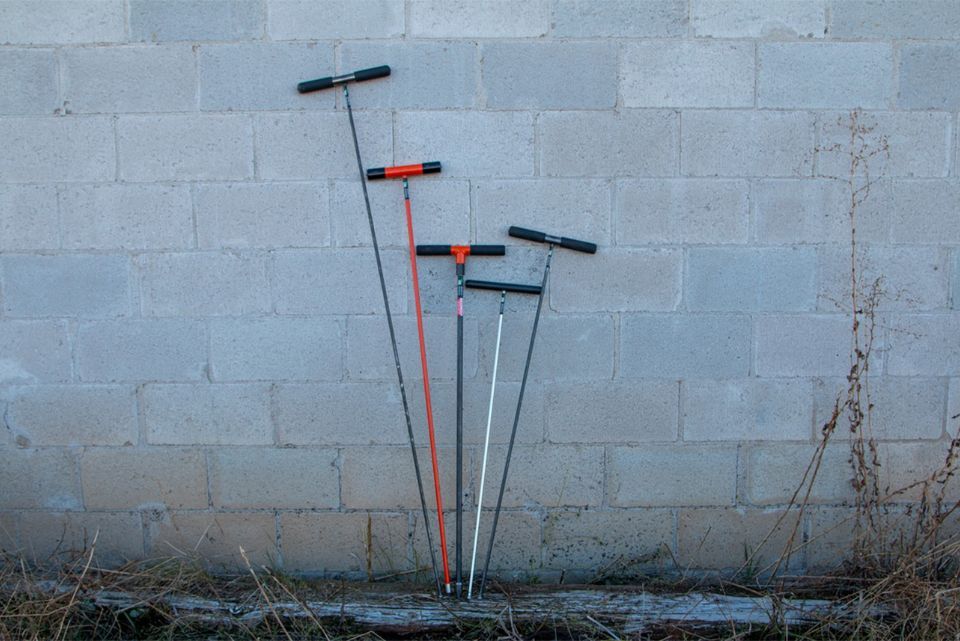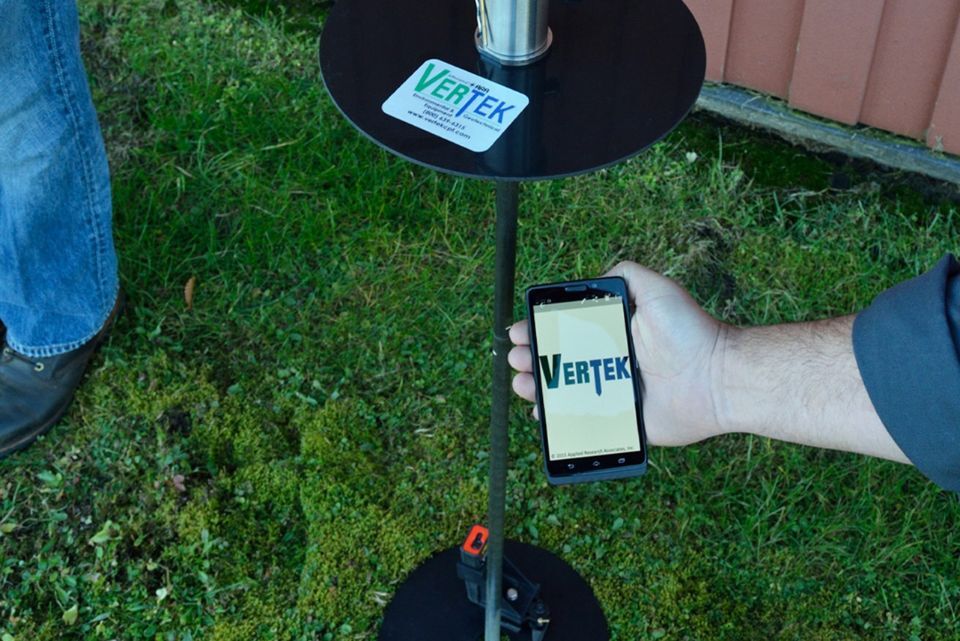Common Geotechnical Tests for Foundation Design
Geotechnical engineers utilize a variety of tests to evaluate soil and rock properties, verifying that structures are constructed on stable ground. Read on and discover the common geotechnical tests for foundational design.
Standard Penetration Test (SPT)

The Standard Penetration Test (SPT) is a widely recognized method for assessing soil strength and consistency, providing critical data to guide foundation design. During the test, a thick-walled sampling tube is driven into the ground at the base of a borehole using blows from a hammer. The number of blows required to penetrate the soil is recorded, yielding the "N-value," which offers insight into soil density and bearing capacity. This data helps engineers determine appropriate foundation requirements.
Despite its simplicity, the SPT delivers valuable information across various soil types, making it a standard in geotechnical investigations.
Cone Penetration Test (CPT)
The Cone Penetration Test (CPT) involves pushing a cone-shaped device into the soil at a constant rate while simultaneously measuring various parameters such as penetration resistance, pore water pressure, and soil friction. This test provides continuous profiles of soil stratigraphy, helping to identify different soil layers and their properties. CPT data is essential for determining soil behavior under load, which is crucial for foundation design. This efficiency and ability to deliver immediate results make CPT a preferred choice in many geotechnical assessments.
Furthermore, the test can be enhanced with seismic sensors to measure in situ compression and shear wave velocities, which are crucial for seismic site classification, liquefaction analysis, and assessing the soil’s response to seismic activity. These are all vital considerations for geotechnical design and earthquake hazard assessments.
Test Pits
Test pits involve excavating shallow trenches to directly expose subsurface conditions. This method allows engineers to visually inspect soil layers, identify variations in stratigraphy, and collect bulk samples for laboratory analysis. Test pits are especially useful for evaluating shallow foundations and detecting issues such as soil variability or groundwater presence. Though limited in depth due to safety and practical concerns, test pits provide invaluable qualitative data that complements other geotechnical testing methods.
Trenching
Trenching, similar to test pits, involves creating elongated excavations to study subsurface conditions over a continuous area. This approach is useful for identifying lateral variations in soil properties, locating faults, or evaluating the continuity of soil layers. Trenching offers a comprehensive view of subsurface conditions, aiding in foundation design by accounting for spatial variability in soil characteristics. It's especially effective in projects where soil conditions change significantly over short distances.
Borehole Drilling and Sampling
Borehole drilling involves creating vertical holes in the ground to extract soil or rock samples from various depths. These samples are then analyzed in laboratories to determine properties such as grain size distribution, moisture content, and shear strength. Borehole data is important for understanding vertical variations in subsurface conditions, which informs decisions about foundation depth and design. Advanced techniques such as rotary drilling allow for deeper penetration, or the ability to penetrate hard rock layers, ensuring comprehensive subsurface profiling.
Plate Load Test
The Plate Load Test measures the bearing capacity and settlement characteristics of soil by applying a load to a steel plate positioned at the foundation level. By incrementally increasing the load and recording the corresponding settlements, engineers can evaluate how the soil will behave under the weight of the structure. This test offers direct insight into soil stiffness and is particularly valuable for shallow foundation design. However, for reliable results, it's important to confirm that the test plate size and applied loads accurately represent the actual foundation conditions.
Pressuremeter Test
The Pressuremeter Test involves inserting a cylindrical probe into a pre-drilled borehole and inflating it to exert radial pressure on the surrounding soil. By measuring the soil's response to this pressure, engineers can determine in situ stress-strain properties, such as shear modulus and limit pressure. This test is particularly valuable for designing foundations in challenging soil conditions where traditional sampling may be difficult, such as loose sands or soft clays. The data helps to assess soil deformability and strength parameters, which are critical for foundation design.
Flat Plate Dilatometer Test (DMT)
The Flat Plate Dilatometer Test (DMT) uses a blade-shaped probe with a flat, expandable membrane to evaluate soil properties. As the membrane expands against the soil, pressure measurements are taken to assess parameters such as soil stiffness, lateral stress, and shear strength. DMT results are instrumental for predicting settlements and evaluating soil stratigraphy, providing important data for foundation design. Its simplicity and repeatability make it a preferred method in various geotechnical investigations.
Vane Shear Test
The Vane Shear Test measures the undrained shear strength of cohesive soils, particularly soft clays. A four-bladed vane is inserted into the soil and rotated at a constant rate, with the torque required to cause soil failure being recorded. This test provides a quick, direct evaluation of soil shear strength, which is essential for evaluating the stability of excavations and the bearing capacity of foundations. It's especially useful when undisturbed soil samples are difficult to obtain for laboratory testing.
Dynamic Cone Penetration Test (DCPT)
The Dynamic Cone Penetration Test (DCPT) involves driving a cone-tipped rod into the soil using a standardized weight dropped from a specific height. The number of blows required to drive the cone to a set depth is recorded, indicating soil strength and compaction. DCPT is particularly effective for assessing granular soils and is commonly used in pavement design and shallow foundation evaluations. Its simplicity and cost-effectiveness make it a popular choice for preliminary site investigations.
California Bearing Ratio (CBR) Test
The California Bearing Ratio (CBR) Test evaluates the strength of subgrade soil and base materials by measuring soil resistance to penetration under controlled conditions. A plunger is pressed into a prepared soil sample, and the force required to achieve specific penetration depths is recorded. The resulting CBR value, expressed as a percentage, compares the soil's resistance to that of standard crushed stone. This test is especially useful in designing pavements and roadways, as it determines the thickness of materials needed to provide adequate support. By understanding the CBR value, engineers can make informed decisions about material selection and structural design for long-term performance.
Triaxial Shear Test

The Triaxial Shear Test is a laboratory procedure designed to determine the shear strength parameters of soil. In this test, a cylindrical soil sample is encased in a rubber membrane and subjected to controlled pressure conditions. Axial stress is applied until the sample fails, allowing engineers to evaluate the soil's behavior under various stress paths. This test provides valuable data on cohesion, internal friction angle, and stress-strain relationships. The information gained is essential for understanding how soils will perform under different loading conditions, supporting the design of stable, safe foundations.
Now that you know the common geotechnical tests for foundation design, it's evident that each test plays a pivotal role in evaluating subsurface conditions. Utilizing appropriate geotechnical sampling and testing tools ensures that engineers gather accurate data, leading to informed decisions and the successful construction of safe, stable, and durable structures.
Recent Posts
-
10 Ethical Concerns in Soil Sampling Practices
Ethics in soil sampling encompass much more than the simple act of collecting soil. Inadequate or ca …April 22, 2025 -
Understanding Heavy Metals Through Sludge Sampling
Sludge sampling is a critical method for detecting heavy metal contamination in water treatment plan …April 21, 2025 -
Essential Geotechnical Tests for Soil Stability
Geotechnical testing is a critical component in ensuring the safety and stability of construction pr …April 17, 2025




